- 309
- 587
- 93
- Location
- switzerland
A brief tale of woe concerning the diesel plague!
Some background information. Feel free to skip this if you like.
Years ago, a colleague "inherited" me a large tank of diesel for me. Around 250 gallons. You don't want to let that go to waste.
Especially since a visual and olfactory inspection identified it as decent diesel.
So I diligently fueled the HMMWV with it over the following months. It worked splendidly.
To empty the tank completely, I lowered the tank's intake for the last refueling. That was a mistake!
About a gallon too late, I noticed that the otherwise transparent fuel hose was no longer transparent. The soup I had filled up with was anthracite-colored.
So off to the gas station to fill up the rest of the tank with clean fuel. The HMMWV slurped it right up. Or so it seemed.
Months later, I noticed that it was pulling worse and worse. Especially on long uphill stretches, it lacked power. You could feel it was starving.
When less power was required, it ran as usual.
So it seemed obvious that the front diesel filter was clogged. I changed the filter and noticed that the diesel in the filter housing was a little gray... okay. Then there was probably something else in the system. I didn't think anything of it. After that, it ran beautifully again for months.
Until a few days ago... the same symptoms as described above reappeared. I changed the diesel filter again. It ran great after that, but only for about 15 miles. After that, it was walking speed.
So I opened the tank and looked inside. And it didn't look good at all!
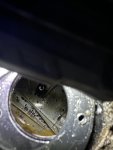
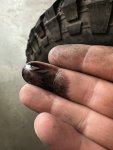
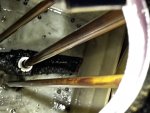
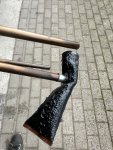
I also looked in the canisters I used to partially refuel the HMMWV. There was that black slimy substance everywhere there too. To explain... what did I get myself into! Here in Europe, they call it diesel plague, or diesel fungus.
This is what the technical article on the subject says:
Fuel made of petroleum consists of environmentally hazardous components, including highly toxic sulphur. Biofuel is made from a combination of natural oils or fats. The key environmental benefit of biodiesel is that this pure vegetable oil (PVO) is biodegradable. Biodiesel does not contain any toxic substances, such as sulphur, aromatics or other environmentally hazardous components.
In order to reduce the amount of toxic exhaust gases, governments require fuel suppliers to mix a prescribed percentage of biodiesel with diesel obtained from petroleum. Since 2008, a worldwide standard has been in force which stipulates the maximum permissible amount of sulphur in fuel. The level of sulphur is reduced by mixing biodiesel with petroleum diesel. More and more countries are making the use of biodiesel mandatory, with the mixing percentage varying between countries. Diesel containing biodiesel can be recognised by the letter B followed by a number; B5, B15, B20 or B90 are most commonly found. The numbers 5, 15, 20 and 90 indicate the percentage of biodiesel present in the diesel fuel obtained from petroleum.
Algae as raw material for biodiesel One of the raw materials for biodiesel is algae. To an increasing extent, algae diesel is considered to be the third generation of biofuels and as a result, its use is on the rise. All fuels contain a certain amount of water. Diesel is less refined (filtered) than petrol, so it contains more water. Biodiesel is hygroscopic, which means that it attracts moisture from the surrounding area due to its chemical composition. The combination of having relatively more water in standard diesel and the hygroscopic properties of biodiesel therefore means that a lot of moisture is present.
Algae like moisture; it makes them grow. Just like other plants, algae also grow more quickly as the temperature rises. One property of sulphur is that it limits the growth of algae. However, as the amount of sulphur in the fuel is gradually decreasing nowadays, the algae have more of an opportunity to multiply in the fuel storage system and the fuel system.
Sludge blocks fuel system Algae can be identified visually as sludge and this sludge accumulates in the fuel storage system and the fuel system. The sludge spreads from the fuel tank to the fuel filter via the fuel pipes. The fuel filter of a diesel engine contains a water separator that collects the moisture in the diesel and prevents it from entering the fuel pump, diesel injectors and engine. The algal sludge accumulates in the filter and will block the filter after a while. The result of this is that the engine will run more and more poorly and at a certain point it will no longer even start, as the fuel is prevented from entering the engine.
The HMMWV had been standing outside for a long time in the summer with an effectively empty tank.
Out of old gasolin habit, I had always left my canisters open after emptying them. The black, greasy substance was also found in them.
All of these are the ideal breeding ground for diesel plague or diesel fungus.
So I removed the tank and ordered a new filter.
Interestingly, there seem to be three different typs around.

I will now reinstall the cleaned tank and flush the system. So fill the tank and don't put the return line back into the tank for now.
Now I have to decide which substances to add to the diesel and hopefully get rid of the pest.
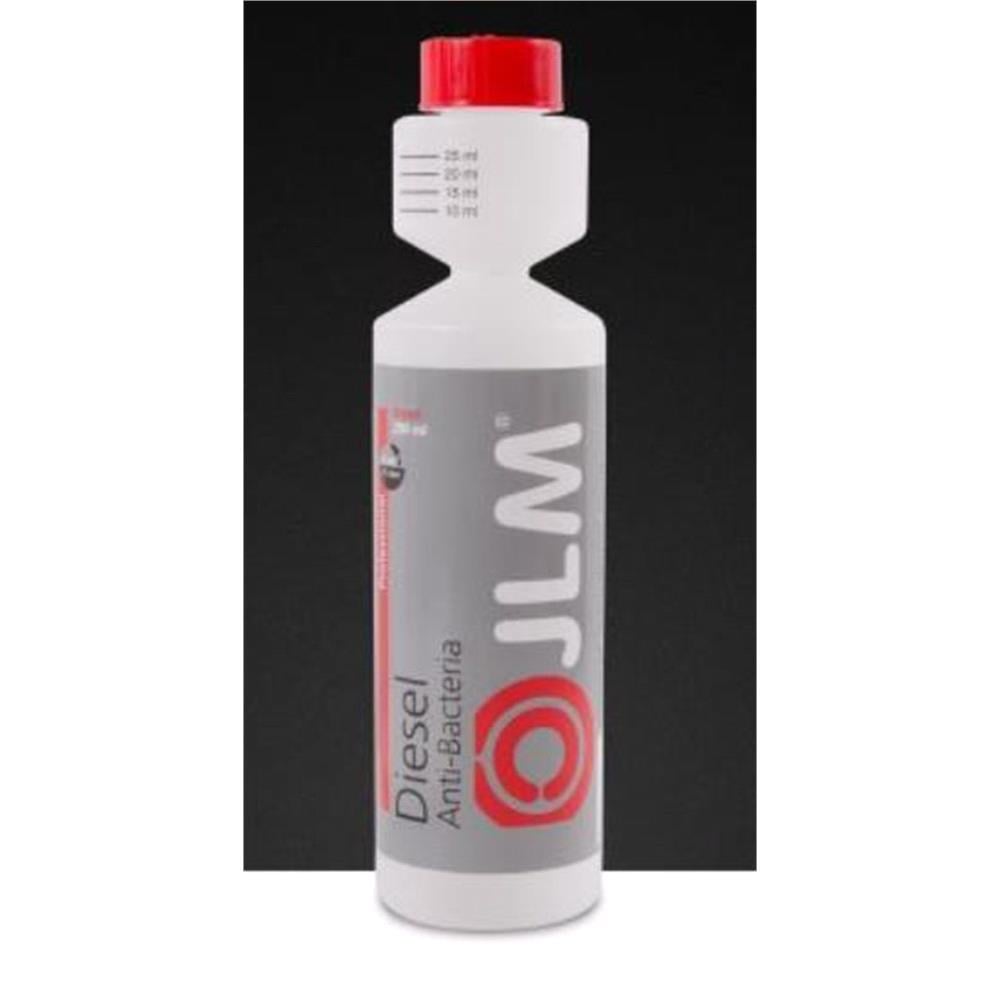 or
or
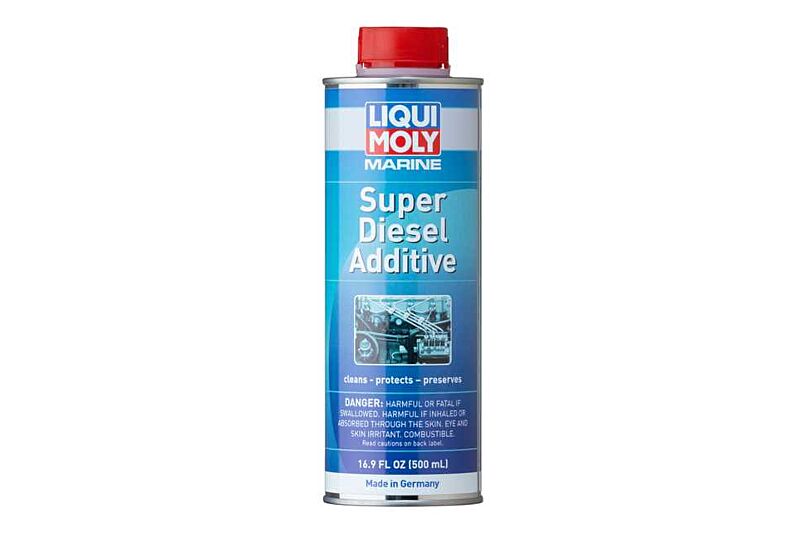
 www.liqui-moly.com
www.liqui-moly.com
Interesting, the product description on the Liqui Moly soup describes a preservative dose (1:1000) and a shock dose (1:200)
(1:1000) and a shock dose (1:200)  for systems that are already infected. I think I'll go for the shock dose
for systems that are already infected. I think I'll go for the shock dose 
So what do we learn from this?
1) Don't be greedy and leave the last bit in the tank you were given.
2) Diesel doesn't like to be stored in an open, warm, and damp place.
3) Close the diesel canisters when they are empty.
4) Removing the tank is not a pleasant job.
Some background information. Feel free to skip this if you like.
Years ago, a colleague "inherited" me a large tank of diesel for me. Around 250 gallons. You don't want to let that go to waste.
Especially since a visual and olfactory inspection identified it as decent diesel.
So I diligently fueled the HMMWV with it over the following months. It worked splendidly.
To empty the tank completely, I lowered the tank's intake for the last refueling. That was a mistake!
About a gallon too late, I noticed that the otherwise transparent fuel hose was no longer transparent. The soup I had filled up with was anthracite-colored.
So off to the gas station to fill up the rest of the tank with clean fuel. The HMMWV slurped it right up. Or so it seemed.
Months later, I noticed that it was pulling worse and worse. Especially on long uphill stretches, it lacked power. You could feel it was starving.
When less power was required, it ran as usual.
So it seemed obvious that the front diesel filter was clogged. I changed the filter and noticed that the diesel in the filter housing was a little gray... okay. Then there was probably something else in the system. I didn't think anything of it. After that, it ran beautifully again for months.
Until a few days ago... the same symptoms as described above reappeared. I changed the diesel filter again. It ran great after that, but only for about 15 miles. After that, it was walking speed.
So I opened the tank and looked inside. And it didn't look good at all!




I also looked in the canisters I used to partially refuel the HMMWV. There was that black slimy substance everywhere there too. To explain... what did I get myself into! Here in Europe, they call it diesel plague, or diesel fungus.
This is what the technical article on the subject says:
Fuel made of petroleum consists of environmentally hazardous components, including highly toxic sulphur. Biofuel is made from a combination of natural oils or fats. The key environmental benefit of biodiesel is that this pure vegetable oil (PVO) is biodegradable. Biodiesel does not contain any toxic substances, such as sulphur, aromatics or other environmentally hazardous components.
In order to reduce the amount of toxic exhaust gases, governments require fuel suppliers to mix a prescribed percentage of biodiesel with diesel obtained from petroleum. Since 2008, a worldwide standard has been in force which stipulates the maximum permissible amount of sulphur in fuel. The level of sulphur is reduced by mixing biodiesel with petroleum diesel. More and more countries are making the use of biodiesel mandatory, with the mixing percentage varying between countries. Diesel containing biodiesel can be recognised by the letter B followed by a number; B5, B15, B20 or B90 are most commonly found. The numbers 5, 15, 20 and 90 indicate the percentage of biodiesel present in the diesel fuel obtained from petroleum.
Algae as raw material for biodiesel One of the raw materials for biodiesel is algae. To an increasing extent, algae diesel is considered to be the third generation of biofuels and as a result, its use is on the rise. All fuels contain a certain amount of water. Diesel is less refined (filtered) than petrol, so it contains more water. Biodiesel is hygroscopic, which means that it attracts moisture from the surrounding area due to its chemical composition. The combination of having relatively more water in standard diesel and the hygroscopic properties of biodiesel therefore means that a lot of moisture is present.
Algae like moisture; it makes them grow. Just like other plants, algae also grow more quickly as the temperature rises. One property of sulphur is that it limits the growth of algae. However, as the amount of sulphur in the fuel is gradually decreasing nowadays, the algae have more of an opportunity to multiply in the fuel storage system and the fuel system.
Sludge blocks fuel system Algae can be identified visually as sludge and this sludge accumulates in the fuel storage system and the fuel system. The sludge spreads from the fuel tank to the fuel filter via the fuel pipes. The fuel filter of a diesel engine contains a water separator that collects the moisture in the diesel and prevents it from entering the fuel pump, diesel injectors and engine. The algal sludge accumulates in the filter and will block the filter after a while. The result of this is that the engine will run more and more poorly and at a certain point it will no longer even start, as the fuel is prevented from entering the engine.
The HMMWV had been standing outside for a long time in the summer with an effectively empty tank.
Out of old gasolin habit, I had always left my canisters open after emptying them. The black, greasy substance was also found in them.
All of these are the ideal breeding ground for diesel plague or diesel fungus.
So I removed the tank and ordered a new filter.
Interestingly, there seem to be three different typs around.

I will now reinstall the cleaned tank and flush the system. So fill the tank and don't put the return line back into the tank for now.
Now I have to decide which substances to add to the diesel and hopefully get rid of the pest.


Marine Super Diesel Additive
A combination of additives that clean and maintain diesel fuel systems. Prevents corrosion and increases lubrication thus reducing fuel pump and injector wear. Increases Cetane value for improved engine performance, easier starting and lower emissions. Regular use keeps the fuel system in...
Interesting, the product description on the Liqui Moly soup describes a preservative dose
 (1:1000) and a shock dose (1:200)
(1:1000) and a shock dose (1:200)  for systems that are already infected. I think I'll go for the shock dose
for systems that are already infected. I think I'll go for the shock dose 
So what do we learn from this?
1) Don't be greedy and leave the last bit in the tank you were given.
2) Diesel doesn't like to be stored in an open, warm, and damp place.
3) Close the diesel canisters when they are empty.
4) Removing the tank is not a pleasant job.
Last edited:


